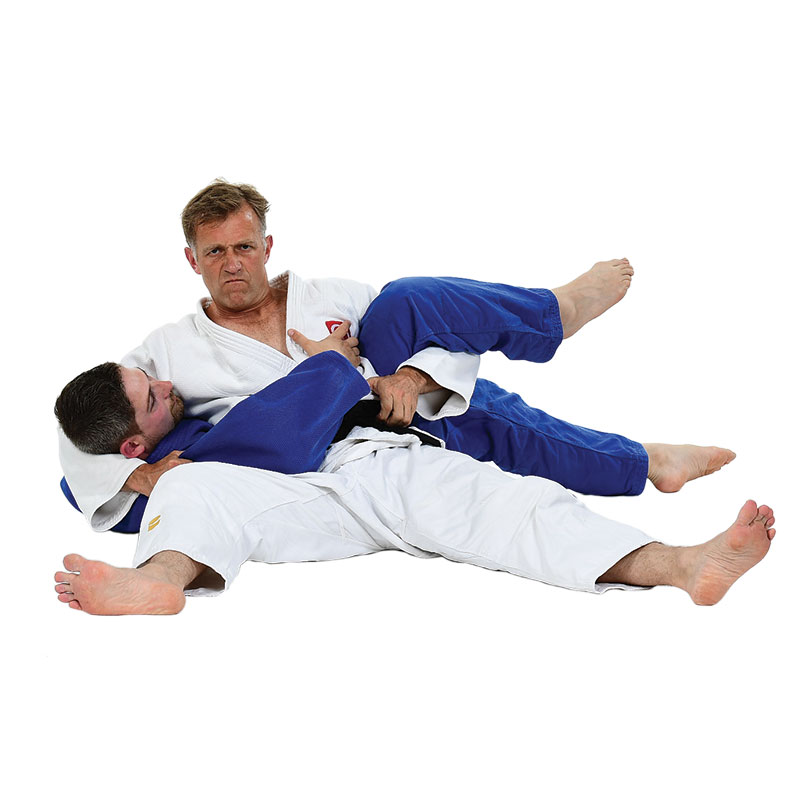Ura-gatame 裏固 (Reverse Hold)
Classification: Katame-waza → Osae-komi-waza (Holding Techniques)
Ura-gatame is a rare but officially recognised hold-down technique in judo. Unlike most osaekomi-waza, where tori controls uke from the top or side, in ura-gatame, tori lies on their back, effectively pinning uke while facing upward. The technique gets its name from ura (裏), meaning “reverse” or “backside,” and showcases judo’s principle of maximum efficiency—even in unusual positions.
Execution
-
Tori lies on their back, underneath or next to uke.
-
The right arm is wrapped around uke’s neck, similar to a collar tie or head control.
-
The left arm controls uke’s* lower body, usually gripping around one or both legs.
-
Tori presses their back into uke while pulling with both arms to keep uke’s shoulders pinned to the mat.
This position might originate during transition scrambles, counterattacks, or failed submissions, especially from turtle positions (kame no kamae).
Biomechanics
Despite being unconventional, ura-gatame relies on:
-
Back pressure to keep uke from moving
-
Isolation of limbs—particularly the head and legs
-
Gravitational leverage as tori pushes upward and outward while pulling uke inward
The dual control (upper body and lower body) limits uke’s ability to bridge or rotate.

Escapes
-
Ebi and rotation (tori):
Tori can make space by performing ebi (shrimping) to slide away from uke. Once enough space is created, tori rotates onto the stomach to escape or transition. -
Head push with the leg (uke):
If uke is trapped on top, they may attempt to push tori’s head with the leg to free themselves. However, caution must be taken—compressing the head with no arm trapped is illegal due to injury risk (e.g., neck crank or spine pressure). -
Roll and frame:
Uke can create a frame between themselves and tori, then bridge and rotate to recover posture or transition to a guard.
Variations & Entries
-
From turtle position (kame no kamae):
A common entry:-
Uke is in a turtle posture.
-
Tori inserts one arm under uke’s armpit and grips their own collar to secure the arm.
-
The other hand grabs uke’s leg or belt.
-
Tori pushes their own head downward to the mat and pulls uke’s leg over their head, rotating uke and placing them into a controlled ura-gatame position.
-
-
Submission transitions:
Ura-gatame is occasionally used to set up triangle strangles (sankaku-jime) or arm locks, especially if uke overextends in an attempt to escape.
Did you know?
Although ura-gatame is rare in competition judo, it’s officially listed in the Kodokan’s Shinmeisho-no-waza—a set of newer techniques recognised for their effectiveness and variation from classical forms. The position embodies adaptability and creativity, often used in no-gi grappling and Brazilian jiu-jitsu as well.